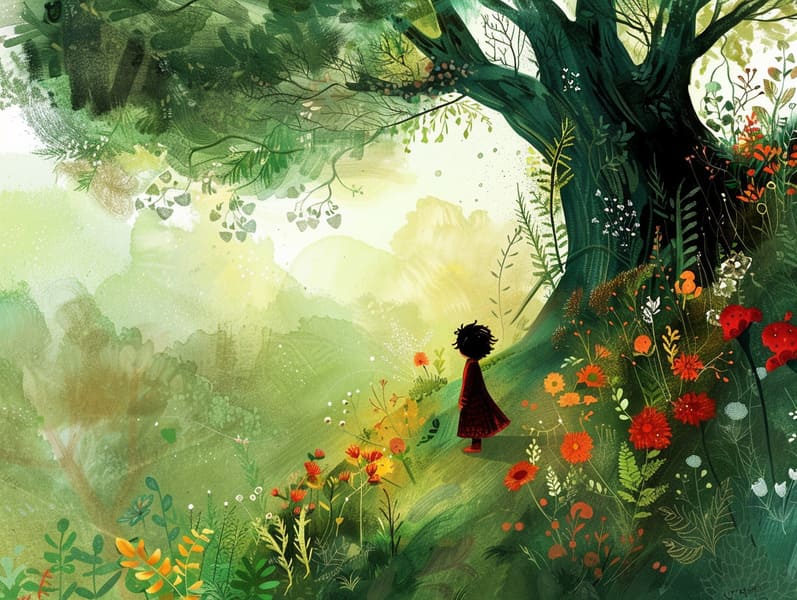The Creation of Fairy Tales and Its Eternal Appeal.
The Creation of Fairy Tales and Its Eternal Appeal.
Blog Article

Ancient fairy tales have enduring presence. These stories have been shared from one generation to the next millennia before they were ever recorded. They emerged from a variety of civilizations, including Eastern traditions. They were initially shared among older generations, often carrying themes and messages aligned with the societal norms and beliefs of the time.
The famous Grimm duo, Jacob and Wilhelm, were among the first to collect and release many of these beloved tales. Their compilation, "Grimm's Fables," included classics like "The True Bride," "The Story of Hansel and Gretel," and "Little Snow White," which have since become pillars in the world of traditional fairy tales. Similarly, H. C. Andersen's whimsical tales, such as "The Little Mermaid," and "The Story of the Ugly Duckling," have floated into hearts worldwide, cementing their place in the pantheon of treasured fairy tales.
Despite their ancient origins, these stories remain as applicable as ever, especially as bedtime stories for kids. These delightful tales are now available in many formats, including gorgeously illustrated books, delightful animations, and internet fairy tales.
Their persistent charm can be linked to several charming aspects:
Important Morals: Timeless fairy tales often teach important moral lessons. Fairy tales like "The Shepherd Boy and the Wolf" teach the merit of sincerity, while "The Hare and the Tortoise" illustrate the values of steadfastness and unpretentiousness. These tales offer children clear distinctions between virtue and vice, developing their moral compass in a kind yet impactful way.
Compassion and Knowledge: Classic fairy tales frequently include characters facing obstacles and hardships, inspiring kids to understand with their struggles and rally behind their triumphs. For instance, "Beauty and Her Beast" conveys the value of seeing beyond the surface to perceive the inner being of a person, building understanding and appreciation.
Cultural Understanding: Many classic fairy tales are rich in the cultural contexts from which they sprang. Learning from these fairy tales can provide intriguing perspectives into different heritages, promoting a sense of global respect and recognition.
Inventiveness and Fantasy: The whimsical elements in traditional fairy tales—enchanted objects—ignite children’s dreaming abilities. These fairy tales move readers to mythical realms, activating inventive dreams and a sense of mystery that continues a lifetime.
Traditional fairy tales are not only captivating but also edifying. They provide whimsical tools in enhancing various cognitive and affective skills in the young. When traditional fairy tales are told out loud, they enhance linguistic abilities by presenting new word meanings and detailed sentence structures. This practice also strengthens hearing perception and mindfulness, as children track the narrative, eager to see what happens next.
Furthermore, talking about the themes and characters of old fairy tales can foster thinking skills and problem-solving abilities. Children are taught to spot patterns, foresee events, and get cause and effect. These debates also aid little ones speak out their thoughts and feelings, strengthening their emotional intelligence.
In today’s technological age, the more info existence of online storybooks has made these narratives more acquirable than ever. Web platforms and online apps offer ample collections of children's fairy tales that can be experienced or played anytime, anywhere. Fairy tales read out loud are particularly common, offering an charming way for kids to experience these charming tales. Read-aloud books and read-to-me videos carry characters and settings to life, often supplemented by whimsical musical scores and music that boost the narrative journey.
The unfading fascination of classic fairy tales lies in their ability to shift to modern days while staying true to their core messages. Contemporary takes of these narratives often spotlight more inclusive figures and modern settings, making them relevant to today’s audience. However, the essential messages of fearlessness, charity, and fairness remain unchanged, continuing to affect kids of all ages.
Classic fairy tales also offer a sense of solace and knowability. They share a structured narrative with a plain beginning, middle, and end, often drawing to a close with the settlement of conflicts and the triumph of honesty over deceit. This predictability can be comforting for kids, proffering a sense of solidity in an variable world.
Old fairy tales continue to captivate and educate new generations, maintaining their allure and importance in modern society. As bedtime stories for kids, they grant a perfect blend of enchantment and education, sustaining moral values, empathy, and creativity. The prevalence of internet fairy tales and the in demand status of fairy tales narrated certify that these timeless stories remain within reach to new generations.
By holding onto and recounting these tales, we continue to admire the rich tapestry of fantasy and cultural heritage. Whether you are exploring a gorgeously illustrated book, enjoying a cyber library, or playing an narrated book, the appeal of bedtime fairy tales is always within reach. These narratives highlight of the timeless influence of storytelling and its ability to unite us across eras and regions.
If you are discovering a gorgeously illustrated book, experiencing a digital library, or listening on an read-aloud book, the mystique of ancient fairy tales is always within reach.
These tales remind us of the unfading ability of storytelling and its ability to bind us across generations and cultures, forming a connection that captivates and teaches alike.